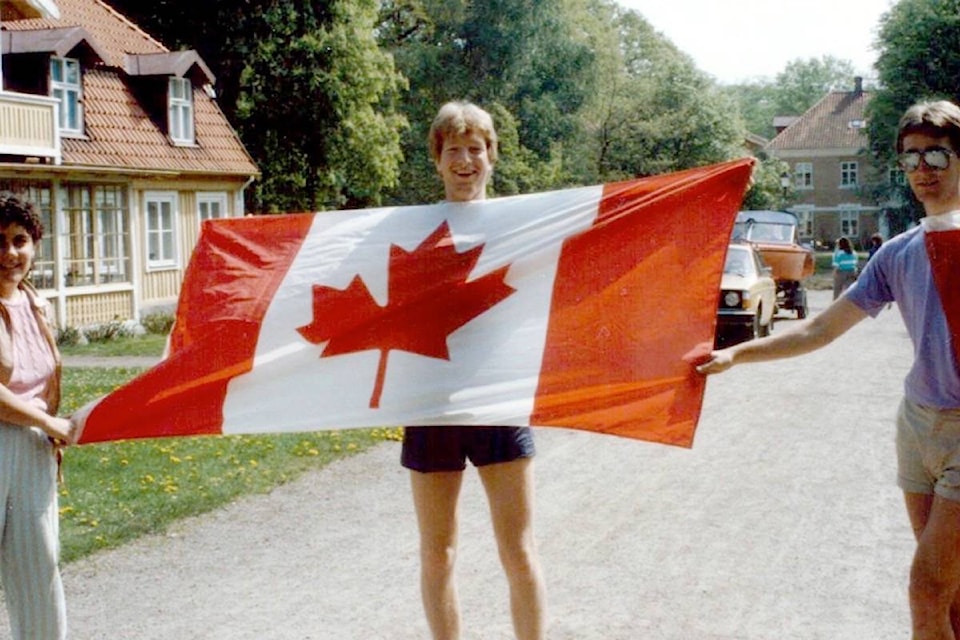Patti Shales Lefkos
For The Morning Star
The Rotary Youth Exchange Program, once known as Rotary Student Exchange, has become one of Rotary’s most respected and valued programs. The first exchanges, two-week stints during school holidays, were arranged in 1927 by Rotary Clubs in Copenhagen, Denmark.
The long-term Rotary Exchange Program as we know it now had its origin at an international assembly of Rotary governors, held at Lake Placid, N.Y. in 1958. Harley Shaver, a past Rotary governor of Nebraska, asked those present to go home and consider the new idea. The proposed exchange would enable students to spend a year in a different country, in a new culture, while going to school. Joe Bradbury, an incoming Rotary governor from Australia, accepted the challenge. Work was done at the assembly to develop the framework of the new program.
The first exchange was held in 1959 when Joe Rogers, a 15-year-old student from Scottsbluff, Neb., arrived in Myrtleford, Australia. At the same time two Australian students, Nick Rutherford and Norm Jordon, arrived in Scottsbluff and Grand Lake, Colo.
Today 8,000 to 9,000 short and long-term exchanges occur each year, allowing the opportunity for students to develop international friendships and learn about and appreciate different cultures. A longtime member of Kalamalka Rotary, Vernon lawyer Tom Christensen’s 1984 exchange experience remains vivid in his memory 30 years later.
Christensen’s accomplishments in the field of law and service as MLA for Vernon-Monashee, when he held various cabinet portfolios between 2001 and 2009, are well-known. But before all that, the unflappable Christensen, presently a lawyer with Nixon Wenger and self-described recovering politician, travelled much farther than Victoria to represent Vernon.
It was August 1984, the era of Bryan Adams and Billy Idol, when a young Christensen graduated from Vernon Senior Secondary and was on his way to Sweden as a Rotary Exchange student.
“I heard a notice on the PA sometime in the fall of 1983, thought it sounded interesting, and applied,” says Christensen. “My first choice of destination was Japan because it was so unique and Canada was strengthening ties with the Asia-Pacific. Then Denmark, as my Christensen ancestors come from there, and lastly Belgium for an opportunity to be immersed in French. I got a call from Rotary. ‘No space in Denmark, but what about Sweden?’”
Curious and shy, but open-minded, he immediately said yes.
“I would have gone anywhere,” says Christensen.
And so, he ended up in a community called Bollnas about 270 km north of Stockholm at about the same latitude as the BC/Yukon border.
“The days were very short in winter. I remember riding my bike to school in the dark with a scarf around my face to avoid freezing in the -30 C temperature and watching brilliant sunsets at 1 p.m.,” he says.
How cold was that? Christensen particularly recalls the sometimes harrowing walk back to class from the school gym that was in a separate building from the school.
“When my hair was wet from the shower it would freeze in the short walk and break off,” he says.
Christensen stayed for the entire year with one family composed of Margareta, a school principal; Ake, an engineer and daughter Annike, a Grade 9 student. Their son, Magnus, was on exchange in Kelowna the same year. The family made a special effort to ensure their Canadian guest visited most of the country.
“One highlight was a week of hut-to-hut Nordic skiing inside the Arctic Circle,” he says.
Christensen remembers missing people back home in Vernon in the pre-internet era with no email, texting or Skype, and no turkey dinner Christmas. Instead, he learned to appreciate the traditional smorgasbord of ham, lutefisk – a rather bland whitefish – and the ubiquitous boiled potatoes and knachebrod, hard cracker-like flatread.
“The potatoes were an adjustment,” he says. “They boil the potatoes with the skins on and peel them at the table as they eat them. I would eat the whole thing, peels and all. That caused some funny looks at the start.”
During the year he was especially thankful for the strong camaraderie developed during activities with other Rotary exchange students billeted in the same country.
“We could all relate to the challenges and excitement we were all experiencing in Sweden,” says Christensen. “I learned independence that year.
“I think the most enduring impact was an appreciation and respect for other cultures and recognition that people everywhere are more the same than different.”
